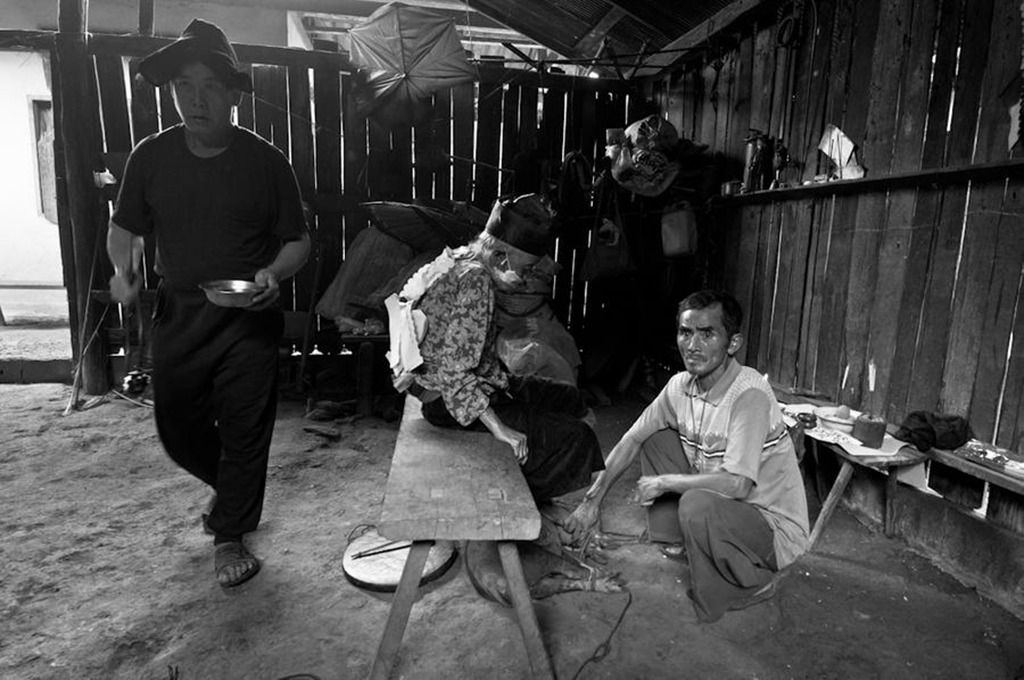
Sacrificial Use of Puppy Runs Parallel to Native Americans Sun Dances
Understanding Cultural Practices: The Parallel Between Hmong Sacrifices and Native American Sun Dances
Explore the shared cultural significance of spiritual sacrifices in Hmong traditions and Native American Sun Dances, promoting respect for cultural diversity and history.

Understanding Cultural Practices: The Parallel Between Hmong Sacrifices and Native American Sun Dances
In today’s diverse world, understanding and respecting cultural differences is more important than ever. This is particularly true when examining deeply rooted spiritual practices like those found in Hmong and Native American traditions. Both cultures share a connection in their ceremonial use of animals as an offering, revealing a profound reverence for life and spiritual guidance.
Cultural Misunderstandings and Misconceptions
The controversy surrounding Hmong practices, such as the sacrificial use of a puppy, highlights the challenges immigrant communities face when preserving their traditions in foreign lands. In the United States, such practices are often met with criticism due to cultural differences and a lack of understanding. Many Hmong immigrants have faced backlash for adhering to these rituals, with critics urging them to abandon their ways in favor of assimilation.
However, these practices are not unique to the Hmong. For example, Native American Sun Dances — a spiritual ceremony that dates back centuries — also involve sacrificial rituals, including the use of animals. The Sun Dance, which spans four years, honors the interconnectedness of life and is conducted with deep spiritual guidance and care. These parallels illustrate that both cultures hold a sacred respect for the animals involved, which are honored and given purpose within the ceremony.
The Importance of Respecting Cultural Diversity
It is worth reflecting on the fact that when European settlers brought their cultural values to America, they were embraced without question. The same respect should be extended to other cultures, like the Hmong, who bring their traditions to new lands. Cultural diversity should be celebrated, not condemned. Practices that might seem foreign or shocking at first glance often carry deep meaning and reflect the history and identity of a people.
A Shared Connection in Spiritual Practices
The similarities between the Hmong and Native American traditions serve as a powerful reminder of the shared humanity in cultural expressions. Both cultures demonstrate an unwavering connection to spirituality, community, and respect for life. By learning about and acknowledging these practices, we can foster greater understanding and appreciation for the rich tapestry of traditions that make up our world.
Final Thoughts
The Hmong and Native American Sun Dances exemplify how spiritual rituals transcend cultural boundaries, connecting people through shared reverence for life and the divine. As we strive for cultural harmony, it is essential to approach differences with curiosity and respect, embracing the diversity that enriches our collective experience.
References and Further Reading
- Hmong Practice | December 24, 1995 | Articles.Latimes.Com | Enlightened because the sacrificial use of a puppy runs parallel to use by Native Americans in our sun dances, long before the “American way” was established by the invading Europeans.





My mom was the subject of this practice when I was younger. I found it greatly disturbing!!! How in the heck do you sacrifice such an innocent being? In my personal opinion we should abolish this practice.
I guess it’s all about spirituality.
Nus Vaj: You must find it disturbing because of your socialization and upbringing in this non-earth-centric society. Abolishing indigenous practices is what has been happening since European imperialism and evangelism of the world over. Remember that what is “cute” or appealing in one culture, will not necessarily hold the same attribute in another. I encourage you to see our practices through our own lens, not through the perspective of an imposed culture. No one is free from it; we internalize many ideas and values without ever realizing that we’ve just been had. Before proclaiming the abolition of any practice, we must first critically analyze it and understand the symbolism and meanings of such practices.
No living being should be sacrificed for religious purposes, period. For example killing baby lambs in the Jewish traditions.
Mother Earth is nourishing and I’m pretty sure she weeps when we kill.
I’ll have to disagree with you. In many earth-centered traditions, we honor the animal when we “sacrifice” it. We don’t kill the animal just to kill. It is not out of cruelty that we kill an animal. Rather, the sacrificial ceremonies are an acknowledgement of the animal’s spirit and worth. When we take its life, we are conscious that we are sacrificing its life and spirit in exchange for another. We don’t just kill and dispose the carcass. We utilize nearly every part of that animal and we eat it to nourish our own bodies. We understand that we do not take its life in vain, but rather the animal has died for a greater cause. That is a far cry from cruelty and is a lot more respectful than killing animals on meat farms and mass production slaughter houses that take the animals life without ritual or without acknowledging the spirit of the animal. Mother Nature weeps when we try to take ourselves out of the natural equation. We too are animals and we also must eat to survive…it is the cycle of life that has been in existence before homosapiens came into being. Mother Nature does not weep; she created this system so that the system can be self-sustaining. As beings capable of spiritual elevation and consciousness, we have rituals in our hunt to honor the spirits of nature. Unless you are a strict vegan, you are perhaps more guilty of this “killing innocent animals” when you eat in restaurants, fast food joints, buy meat from the grocery store, etc. than those who do it for spiritual purposes. What is eating if not a sacrificial ritual? We are killing one living thing to nourish another. In spiritual practices, we acknowledge this fact, while in secular society, we ignore that plants and animals (lower down the food chain) also have a spirit and we just devour it without ritual or acknowledgement of the animal’s life.
Sorry we did not eat the puppy. What right do we have to say we can sacrifice another being to save ourselves? The puppy, the chicken, the cow, the pig did not choose to be sacrifice. What happens when another being decides that we are to be sacrificed? Think about it.